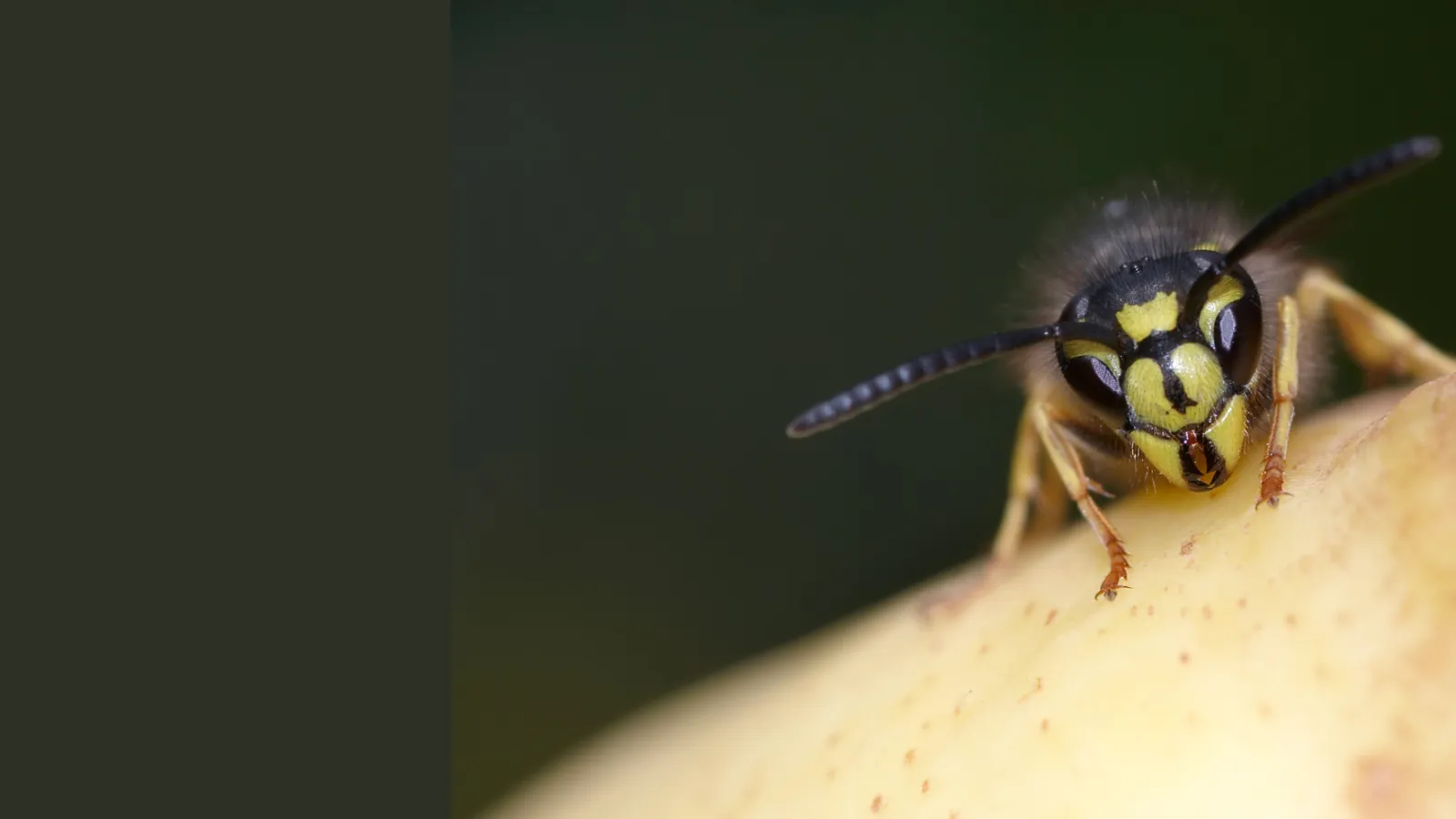
Yellow Jackets
Latin Name: Vespula spp. and Dolichovespula spp.
Yellow Jacket Wasps: What You Need to Know
Appearance:
Yellow jackets are easily recognized by their sleek bodies and distinctive black and yellow markings. Unlike bees, they do not have hairy bodies, which makes them appear shinier. Their size typically ranges between 1/2 to 3/4 of an inch.
Behavior and Habitat:
- Nesting: Yellow jackets build their nests in a variety of locations, including underground burrows, hollow walls, trees, or shrubs. These nests can grow to house thousands of wasps.
- Diet: They are scavengers and predators, feeding on sugary substances like nectar or fruits, as well as proteins from insects and human food scraps. This is why they are often seen around garbage bins or outdoor events.
- Aggression: Yellow jackets are highly territorial and will aggressively defend their nests. They can sting multiple times, unlike bees, which lose their stinger.
Life Cycle:
- Colonies begin in spring with a queen who starts building the nest and laying eggs.
- Worker wasps take over nest building and foraging as the queen continues to lay eggs throughout the summer.
- In late summer and early fall, the colony peaks in population, making encounters more frequent and sometimes dangerous.
- As the weather cools, the colony dies off, except for newly mated queens who hibernate through the winter.
Risks:
- Stings: Yellow jackets can deliver painful stings, which may cause severe allergic reactions (anaphylaxis) in some individuals.
- Nuisance: They are highly attracted to food and beverages, especially during outdoor activities, making them a common pest for humans.
Control and Prevention:
- Eliminate Attractants: Keep trash cans sealed, cover sugary drinks, and clean up spills promptly during outdoor activities.
- Professional Nest Removal: Due to their aggressive nature, it is best to call a pest control professional to safely remove nests.
- Preventative Measures: Seal cracks and crevices in your home to prevent them from entering or building nests near your property.
Yellow jacket wasps play a role in controlling other insect populations, but their aggressive behavior around humans often necessitates management. Our professional pest control services can ensure safe and effective removal if needed.
Similar Pests: Carpenter Bees, Paper Wasps, Cicada Killers
